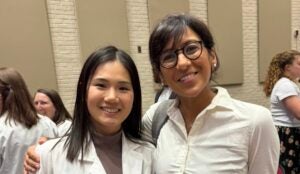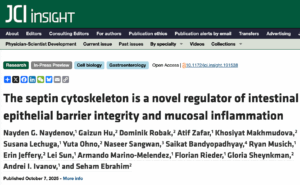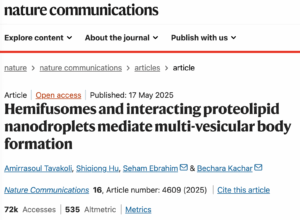News
Seham Ebrahim
Gaizun’s paper is published in JCI Insight. Gaizun showed for the first time that the septin cytoskeleton is an essential regulator of leaky gut, and its disruption can cause and exacerbate inflammation.
Dr. Seham Ebrahim received a $2.4 million NIH Research Project Grant (R01) to uncover how developing sperm sense and respond to mechanical forces during their transformation into mature sperm. This process, known as spermiogenesis, involves dramatic remodeling of membranes and cytoskeletal networks, yet how these mechanical cues are detected and coordinated remains largely unknown. With this support, the Ebrahim Lab will investigate the molecular machinery that governs membrane remodeling and cytoplasmic reduction during sperm maturation. This work could reveal fundamental mechanisms of male fertility and inform the design of next-generation, non-hormonal contraceptives.
Our hemifusome discovery published in Nature Communications!
The Kachar Lab, NIH and the Ebrahim Lab recently discovered the hemifusome—a previously unknown organelle visualized using cryo-electron tomography at UVA. These long-lived, half-fused vesicles are precursors to the formation of multivesicular bodies through lipid-based remodeling. This finding reveals a completely new pathway in cellular trafficking, with broad implications for understanding diseases like cancer and neurodegeneration.
Dr. Seham Ebrahim received a prestigious $2 million NIH Maximizing Investigators’ Research Award (R35) to uncover how intestinal epithelial cells sense and respond to mechanical forces. These forces—from food movement to microbial pressure—shape gut function and health. With this support, the lab will explore how mechanical cues are converted into signals that maintain barrier integrity and control inflammation. This work could uncover new therapeutic targets for IBD, colorectal cancer, and other diseases linked to epithelial dysfunction.

Sharon Wenxuan Zheng jons Ebrahim Lab as BIMS student!
Sharon’s project will focus on the role of mechanotransduction during sperm development





